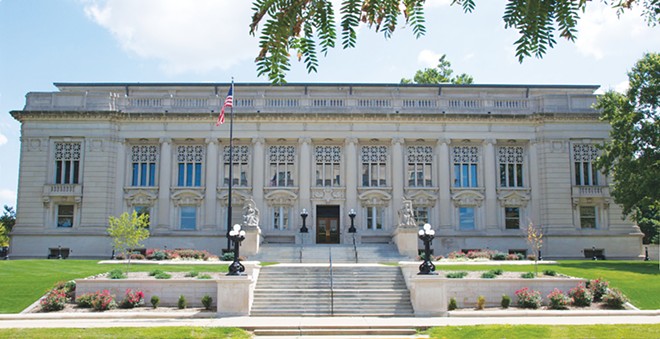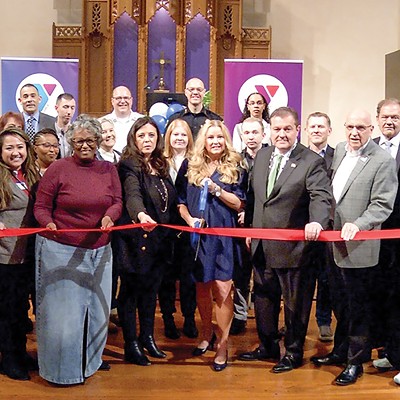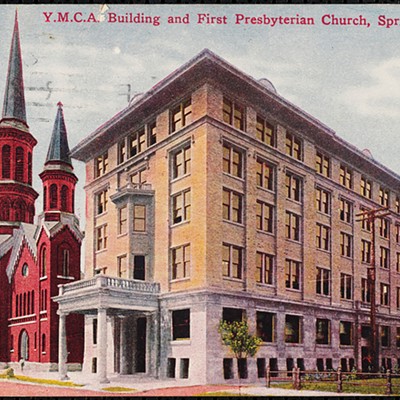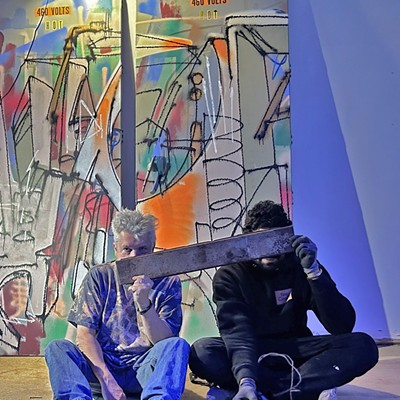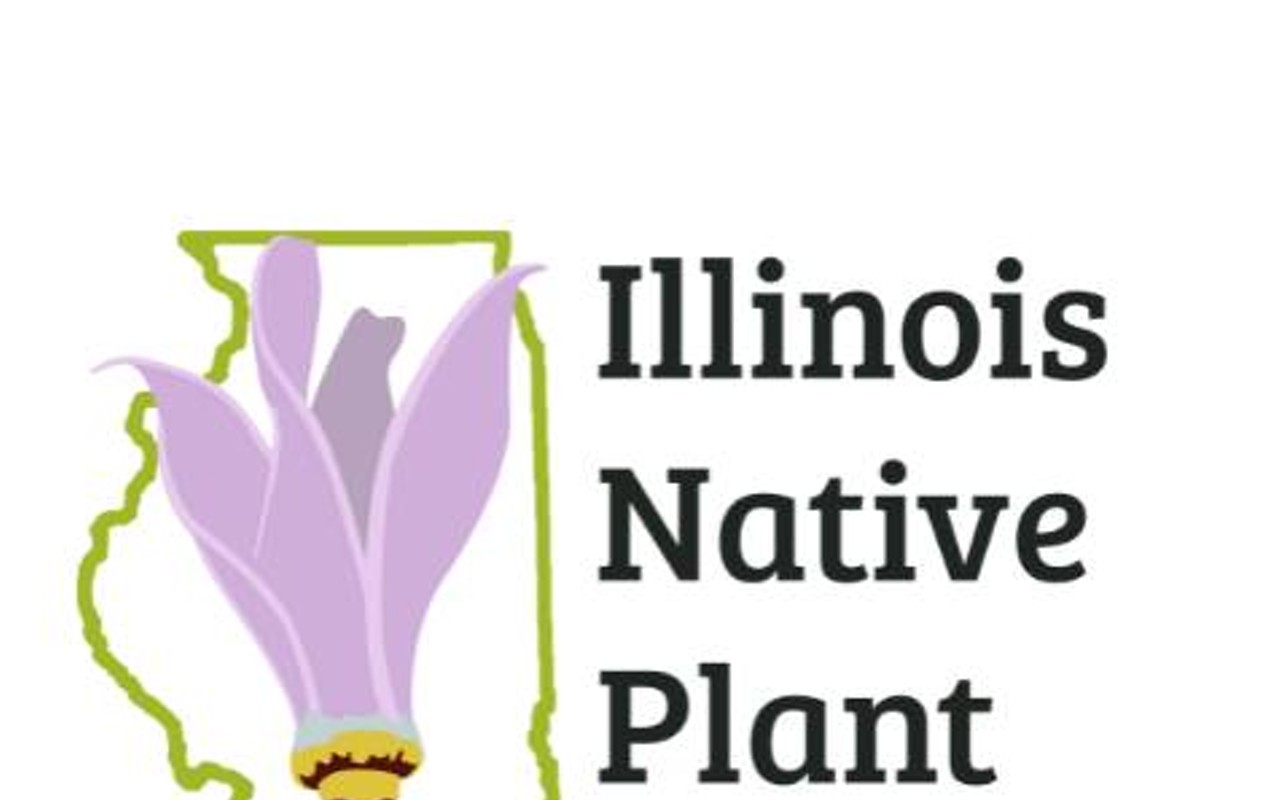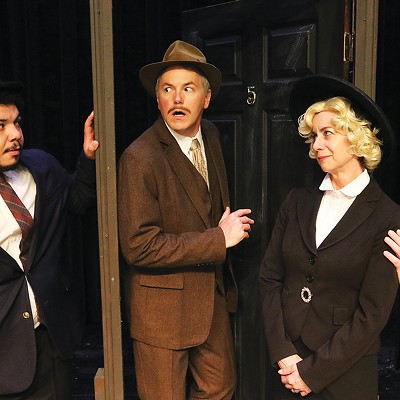Illinois has a magnificent Supreme Court building, which was dedicated in 1908. Architect W. Carbys Zimmerman modeled the building after the U.S. Treasury Building in Washington, D.C., and the Pantheon in Rome. Two large sculptures by Charles J. Mulligan flank the front entrance to the building. One is titled Justice and Power and the other Law and Knowledge. Spectacular murals by Albert Krehbiel adorn the walls of the Supreme Court hearing room and portray attributes of the law (wisdom, justice, power) and functions of the law (promoting truth and purity, protecting industry and peace, disclosing fraud and discord, destroying violence and anarchy) and continuity of the law. The large ceiling mural symbolizes the principles of law that serve to harmonize the universe.
The building was closed in 2013 for a $13 million restoration to clean the murals, restore woodwork, refurbish original light fixtures install new HVAC, electrical and plumbing systems. During this time the Supreme Court met in Chicago.
The Illinois Supreme Court Historic Preservation Commission was created in 2007 to assist and advise the Illinois Supreme Court in acquiring, collecting, preserving and cataloging documents, artifacts, and information relating to the Illinois judiciary. John Lupton serves as executive director and Sam Wheeler is director of history programs.
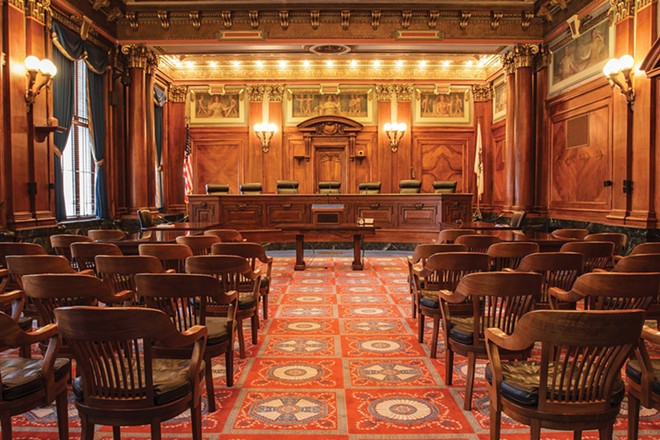
There is a law library in the Supreme Court building which is open to the public. Several educational initiatives are underway to make the Supreme Court building and its resources more accessible to the public. The Illinois Supreme Court Historic Preservation Commission recently received a $135,000 federal grant to digitize Supreme Court cases from the beginning of statehood in 1818 to the end of the Civil War. Cases during this time addressed transportation, immigration, women and children, slavery, the Civil War, the rise of Chicago and urban/rural disputes. This will be a valuable resource for historical researchers, students and genealogists.
A learning center is in the early planning stages which will be used to host school groups. The commission is collaborating with the Governor's Mansion and State Capitol to develop a civics education tour for middle school students. There will also be an online component.
The commission presents "History on Trial," presentations highlighting important but relatively unknown lawsuits in Illinois and American history. Plans are being developed for a retrial of the 1919 Black Sox baseball scandal.
For more information about the Illinois Supreme Court and the Historic Preservation Commission, go to www.illinoiscourts.gov/courts/supreme-court/ and www.illinoiscourthistory.org/. –Karen Witter

